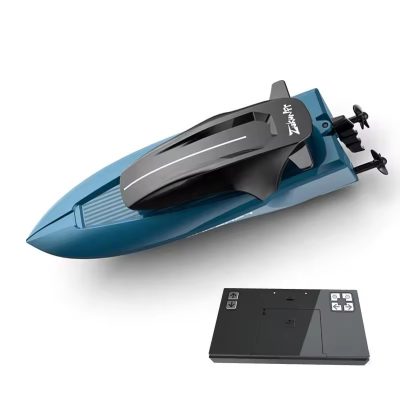Introduction
The hull design of an RC boat significantly influences its performance, handling, and stability on the water. Understanding the different types of hull designs can help you choose the right boat for your needs and optimize its performance. In this blog post, we’ll explore the various hull designs and their key characteristics.
1. Mono Hull
The mono hull is one of the most common and versatile designs used in RC boats. It features a single, deep V-shaped hull that cuts through the water efficiently. Key characteristics include:
- Stability: Offers good stability and is suitable for a variety of water conditions.
- Speed: Capable of achieving high speeds, making it popular for racing.
- Maneuverability: Provides excellent maneuverability, allowing for sharp turns and quick responses.
Mono hulls are ideal for both beginners and experienced hobbyists due to their balance of speed and stability.
2. Catamaran Hull
The catamaran hull consists of two parallel hulls connected by a central structure. This design offers several advantages:
- Stability: Provides exceptional stability, making it suitable for rough waters.
- Speed: Capable of high speeds due to reduced drag and increased buoyancy.
- Handling: Offers smooth and predictable handling, making it easy to control.
Catamaran hulls are favored by those who enjoy high-speed boating and require stability in choppy conditions.
3. Hydroplane Hull
The hydroplane hull is designed for maximum speed and performance. It features a flat bottom with small surface areas that plane on top of the water. Key characteristics include:
- Speed: Capable of achieving extremely high speeds, making it ideal for competitive racing.
- Lift: The design allows the boat to lift and skim over the water surface, reducing drag.
- Handling: Requires skill to handle due to its high-speed capabilities and sensitivity to water conditions.
Hydroplane hulls are best suited for experienced racers looking for top-tier performance.
4. Deep-V Hull
The deep-V hull design features a pronounced V-shape that extends the length of the boat. This design offers:
- Stability: Excellent stability in rough water conditions.
- Cutting Ability: Cuts through waves effectively, providing a smooth ride.
- Handling: Offers good handling and maneuverability, especially in choppy waters.
Deep-V hulls are ideal for those who boat in varying water conditions and need a design that can handle rough waves.
5. Flat-Bottom Hull
The flat-bottom hull is characterized by its completely flat bottom, providing specific advantages:
- Stability: Offers great stability in calm waters.
- Maneuverability: Highly maneuverable, making it suitable for tight turns and precise control.
- Speed: Generally slower than other designs, but offers excellent control and stability.
Flat-bottom hulls are perfect for beginners and those who operate in calm, shallow waters.
Conclusion
Understanding the different RC boat hull designs helps you choose the right boat for your specific needs and preferences. Whether you prefer the versatility of mono hulls, the stability of catamarans, the speed of hydroplanes, the rough water capabilities of deep-V hulls, or the control of flat-bottom hulls, there is a design to match every boater’s requirements. Explore these options to find the perfect hull design for your RC boating adventures.








